Arts Miami
Conceptual & Performance Art at Bal Harbour
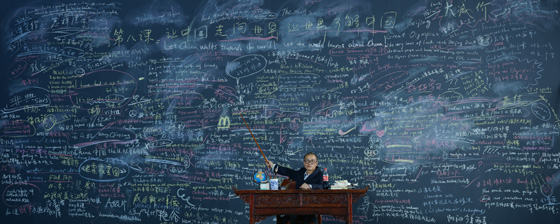
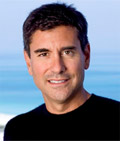
Anthony Japour (AJ) is an independent curator, private art dealer and owner of AJ Japour Gallery. The gallery deals in contemporary art with a focus on the Chinese Contemporary Art Movement and its relationship to the pillars of Western Contemporary Art. Since 2003, AJ has produced numerous art exhibitions and installations in Miami and South Florida. In addition, the Gallery’s secondary mission is to support organizations dedicated to the health, education, and welfare of children. AJ has served on the Fine Arts Board and the Cultural Arts Council of the City of Miami Beach.
Preamble
Following solo exhibitions for such important artists in the Chinese Contemporary Art Movement as Cai Guo-Qiang, I Want to Believe, at the Solomon R. Guggenheim Museum in 2008 and Zhang Huan, Altered States, at the Asia Society, New York in 2009, the International Center of Photography has mounted an impressive and comprehensive retrospective exhibition of the photographic works by Wang Qingsong curated by Christopher Phillips. Cultural legacy being strongly linked to the political and art landscapes of the day, it is interesting to note that the ICP’s Wang Qingsong opening occurred during the Chinese Premier Hu Jintao’s visit to the United States and with the Metropolitan Opera’s run of the 1987 opera “Nixon in China” now playing at Lincoln Center. Wang Qingsong’s enigmatic masterpiece, Nutrients, 2008 is also making its US debut in a renovated Mackle in Key Biscayne, Florida in President Nixon’s former hometown.
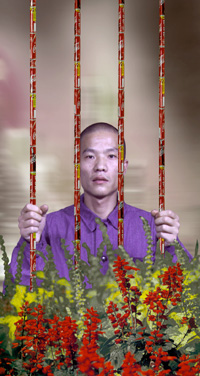
WHEN WORLDS COLLIDE
WANG QINGSONG
International Center of Photography
1114 Avenue of the Americas
New York, NY 10036
http://www.icp.org
Born and raised in northeastern China in the Daqing oilfields, Wang Qingsong’s rise to become one of China’s most important contemporary artists working today was improbable. Qingsong’s singular ambition was to become an artist despite numerous rejections to the art schools in China. When he finally was admitted, he found himself at one of the most prestigious academies, the Sichuan Fine Arts Institute. In the mid-1990’s following China’s Premier Deng Xiaopeng’s pronouncement in 1992 “To Get Rich is Glorious”, Qingsong found himself in the middle of an American-style consumerism in China and joined the Gaudy Art group which reflected the consumer culture invading communism.
Qingsong’s art production began with painting, evolved to collage until he began to explore photography as his primary medium. In the early days of the Chinese Contemporary Art movement, artists were so poor they couldn’t afford materials to make art objects and first began to express themselves with performance art, Zhang Huan being the most notable artist at the time. Similarly, for Qingsong’s computer was so slow that it took him six months to complete his breakthrough works, the Glorious Life series, Thinker, 1998 and Prisoner, 1998. “While economic development becomes the top priority of China’s national politics, the country and its people have changed. Everybody seems satisfied with the achievements wrought by reforms and rapid development. The slogan is a change in a year, a great change in three years, and an unrecognizable transformation in five years.” In these seminal works, Qingsong himself appears in both photographs as “actor” and “director”, a theme that he has continued to build upon over the years with increasingly complex dioramas.
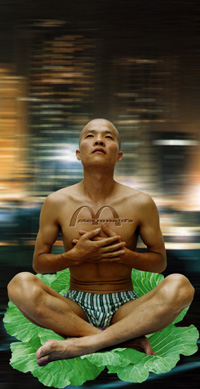
In 2003, Qingsong produced Follow Me, from the first and most popular English language teaching program on China State Television where the artist appears as a professor sitting in front of a blackboard filled with “chinglish” phrases such as “Let China Walks toward the world! Let the world learns about China!” The familiar logos of McDonalds and Nike are set alongside an allusion to China’s most well known brand, the Great Wall of China. At Sotheby’s Contemporary art auction, Nov 2007, Follow Me brought over $700,000, which remains a record price for any Chinese Contemporary photograph sold at auction.

As both artist and photojournalist, Qingsong has continued to capture the tumultuous era of China’s emergence into the world economy in the 21st Century. Home to one fifth of the world population, surpassing the economic powers of both Germany and Japan, China’s GDP is expected to eclipse the United States in economic power by the end of this decade. This transformation occurs against a backdrop of an agricultural society being replaced by an industrial economy. Qingsong himself worked in the oil fields taking over his father’s position after his death on the job. One of the artist’s most compelling works, Dream of Migrants, 2005 alludes to the migration of approximately 10 percent of China’s entire population (equivalent to about a third of the entire US population) who have moved to the urban centers in search of a better life and greater prosperity. Unfortunately, despite the obvious benefits of these low-wage workers, they are not embraced by society at-large but often ridiculed and humiliated as “dirty” or “dangerous”.
FAMILY MATTERS
Arianna Caroli, Carrie Mae Smith, Henry Richardson, Julie Levesque, Luo Brothers, Stephen Gamson, Wang Qingsong, and Zhang Huan.
AJ Japour Gallery
429 Lenox Avenue
Miami Beach, FL 33139
http://ajjapourgallery.com
info@ajjapourgallery.com
The AJ Japour Gallery introduced Qingsong to South Florida audiences back in 2006-2007 at the Palm Beach Contemporary Art Fair and has continued to exhibit his work regularly here in South Florida since that time. Currently on view is Qingsong’s 2008, Nutrients in “Family Matters”, a group exhibition in a recently renovated 1950’s Mackle home. “Family Matters” explores the centrality of the family unit common to all societies throughout the world; it matters what happens in the family and family matters matter.
Qingsong’s enigmatic masterpiece, Nutrients, 2008, is a photograph 10 feet in length. My relationship to this work dates back to my own first visit to China in 2007 when I had the opportunity to meet Qingsong for the first time at his studio with his translator and wife Zhang Fang, and his two little boys Leonardo and Michelangelo. At the time, Qingsong was collecting the props for what would later become “Nutrients” and explaining to me he was doing a medical themed work in homage to his mother who had recently passed away from cancer. Despite my inability to speak a word of Chinese and he a word of English, we carried on spirited discussion about the origins and inspirations of his works that had always fascinated me. He too was quite fascinated about how and why a Harvard-trained doctor adds art curator and dealer to his resume.
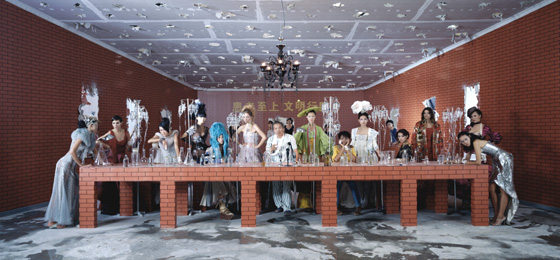
In the intervening period, in 2009, the fashion house Christian Dior in partnership with the Ullens Center for Contemporary Art invited 20 of the top artists from China to create a work in celebration of the brand’s entrance into the Chinese marketplace as part of its 60th Anniversary events; artists included were Qingsong, along with Wang Du, Zhang Huan, Huang Rui, Li Songsong, Zhang Dali, Xu Zhongmin, Liu Jianhua, Lu Hao, Yan Lei, Zhang Xiaogang, Wen Fang, Shi Jingsong, Wang Gongxin, Shi Xiaofan, Liu Wei, Rong Rong & Inri, Tim Yip, Qiu Zhijie and Ma Yangsong. The exhibition also symbolized the opening of a dialogue between two different means of expression, contemporary art and fashion.
Commenting perhaps on the glamorization of medicine and medical therapies in contemporary society, Qingsong plays the role of a Christ-like figure flanked by 13 models dressed in haute couture Dior designs each model undergoing a magic bullet infusion with a “tell me why I should care” attitude. Full of narrative mystery and irony, combining high fashion with the grotesque, Qingsong is the international photographic world’s Alfred Hitchcock.
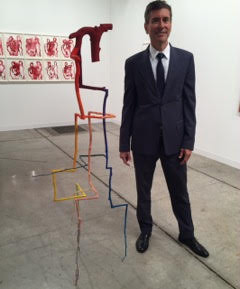
Anthony Japour is an art collector and art advisor. Japour lectures on the Chinese Contemporary Art Movement and its relationship to the pillars of Western Contemporary Art. For over a decade [2002-2012], Japour mounted numerous art exhibitions and installations in Miami Beach and South Florida through AJ Japour Gallery and linked these exhibitions to charity events at his home in South Beach devoted to the health, education and welfare of children. Japour has served on the Fine Arts Board and the Cultural Arts Council of the City of Miami Beach. Japour has been a contributor writing on contemporary art for SocialMiami.com since 2010.


